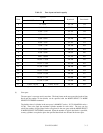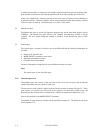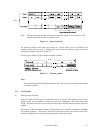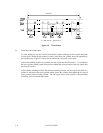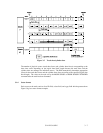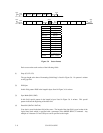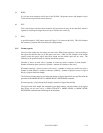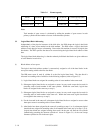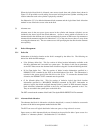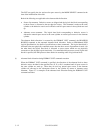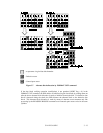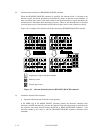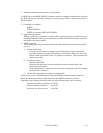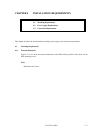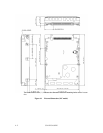C141-E134-01EN 3 - 11
When the logical data block is allocated, some sectors (track skew and cylinder skew) shown in
Figure 3.5 are provided to avoid waiting for one turn involving head and cylinder switching at the
location where the track or the cylinder is physically switched.
See Subsection 3.3.2 for defective/alternate block treatment and the logical data block allocation
method in case of defective sectors exist on the disk.
(2) Alternate area
Alternate areas in the user space (spare sectors in the cylinder and alternate cylinders) are not
included in the above logical data block addresses. Access to sectors which are allocated as an
alternate block in the alternate area is made automatically by means of IDD sector slip treatment or
alternate block treatment (explained in Subsection 3.3.2), so the user does not have to worry about
accessing the alternate area. The user cannot access with specifying the data block on the alternate
area explicitly.
3.3 Defect Management
3.3.1 Defect list
Information of the defect location on the disk is managed by the defect list. The following are
defect lists which the IDD manages.
• P list (Primary defect list): This list consists of defect location information available at the
disk drive shipment and is recorded in a system space. The defects in this list are permanent,
so the INIT must execute the alternate block allocation using this list when initializing the disk.
• D list (Data defect list): This list consists of defect location information specified in a
FORMAT UNIT command by the INIT at the initialization of the disk. This information is
recorded in the system space of the disk drive as the G list. To execute the alternate block
allocation, the FORMAT UNIT command must be specified.
• G list (Growth defect list): This list consists of defective logical data block location
information specified in a REASSIGN BLOCKS command by the INIT, information on
defective logical data blocks assigned alternate blocks by means of IDD automatic alternate
block allocation, information specified as the D list, and information generated as the C list.
They are recorded in the system space on the disk drive.
The INIT can read out the contents of the P and G lists by the READ DEFECT DATA command.
3.3.2 Alternate block allocation
The alternate data block is allocated to a defective data block (= sectors) in defective sector units
by means of the defect management method inside the IDD.
The INIT can access all logical data blocks in the user space, as long as there is no error.
Spare sectors to which alternate blocks are allocated can be provided in either "spare sectors in a
cylinder" or "alternate cylinders". See Subsection 3.1.2 for details.



